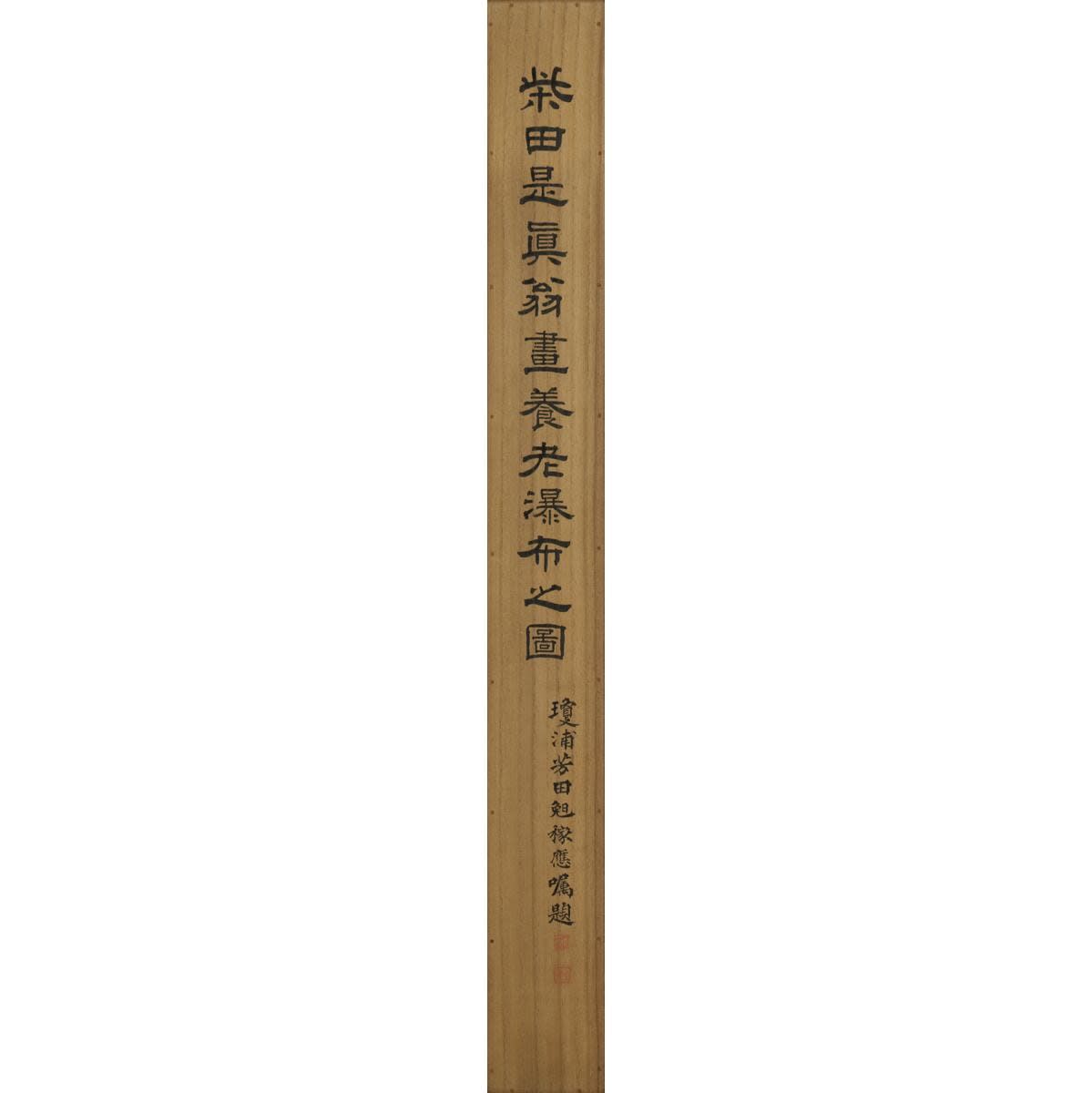Shibata Zeshin (1807−1891)
Yōrō Falls
Color on silk, hanging scroll
At the age of 84
With box authentication by Yoshida Banka, double boxed
Seal: Zeshin
129 x 43.7 cm
197 x 59.2 cm (overall)
Further images
There exist several narrative variations of Yoro, the widely known legend about a filial son and the spring of longevity. The present work by Shibata Zeshin is supposed to base on the Noh play Yoro, which tells the story of the Emperor Yuryaku sending a messenger to Mino Province where a miraculous spring was. The messenger met a woodman and his son, and learned their story: an exhausted son, after collecting firewood, drank a handful of water and was fully recovered. He also brought it back to his parents; after taking sips of it they are spared of the problems that came with age. The legend was so widespread that the spring came to be known as Yoro. Yoro Falls in the MOA Museum of Art depicts a group of imperial messengers, a woodman, and his son. In the present work, a filial son with a gourd nearby is gazing upon the waterfall. Without the figure of the son, this work could be regarded as a waterfall painting. The representation of the falling water and the rocks is extremely close in style to Zeshin’s folding-screen masterpiece Waterfalls in the Seikado Bunko Art Museum. One of the fusuma-e paintings in Daiyu-in sub-temple at Myoshin-ji Temple on the same subject produced by Zeshin at the age of twenty-five was influenced by his master Okamoto Toyohiko of Shijo school. In particular, the rocks, created by strokes of finely cut texture, reflect Toyohiko’s great effect upon Zeshin, which are also regarded as the archetype of the rocks in the present work. Several letters dating Meiji 23 (1890) reveal a fact that Shibata Yonosuke, a renowned entrepreneur in Akita, ordered this hanging scroll through a calligrapher, Yoshida Banka.
Shibata Zeshin (painter, craftsman; 1807−1891)
Edo-born late Edo to early Meiji period painter and maki-e lacquer craftsman. Apprenticed the maki-e techniques under Koma Kansai, and learned Shijo school painting under Suzuki Nanrei and Okamoto Toyohiko, later displayed his great talents for painting, maki-e, and urushi-e (lacquer painting). Revived seigaiha-nuri, a classic style of maki-e, and received many awards in and out of Japan. Produced paintings for the Imperial Palace. Interacted with Rai San’yo, Kagawa Kageki, and other great masters. Designated as an Imperial Court Artist.
Shibata Zeshin (painter, craftsman; 1807−1891)
Edo-born late Edo to early Meiji period painter and maki-e lacquer craftsman. Apprenticed the maki-e techniques under Koma Kansai, and learned Shijo school painting under Suzuki Nanrei and Okamoto Toyohiko, later displayed his great talents for painting, maki-e, and urushi-e (lacquer painting). Revived seigaiha-nuri, a classic style of maki-e, and received many awards in and out of Japan. Produced paintings for the Imperial Palace. Interacted with Rai San’yo, Kagawa Kageki, and other great masters. Designated as an Imperial Court Artist.







